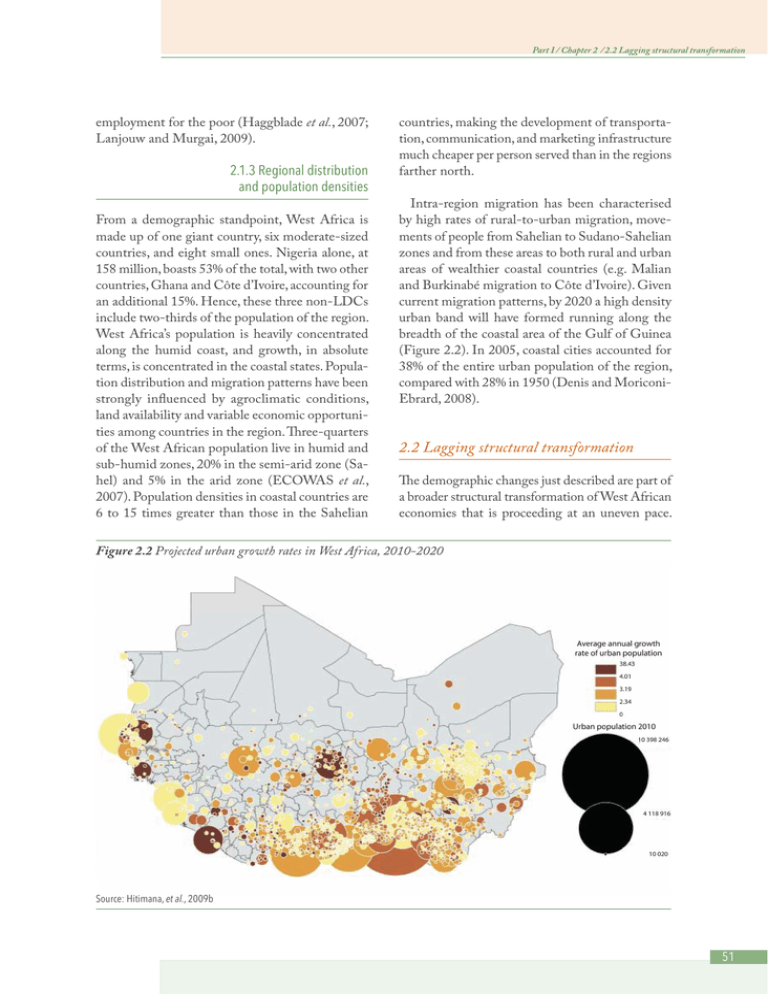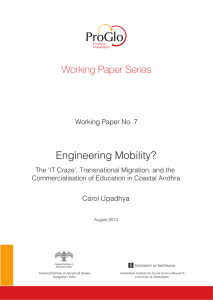6 to 15 times greater than those in the Sahelian economies
advertisement

Part I / Chapter 2 / 2.2 Lagging structural transformation employment for the poor (Haggblade et al., 2007; Lanjouw and Murgai, 2009). 2.1.3 Regional distribution and population densities From a demographic standpoint, West Africa is made up of one giant country, six moderate-sized countries, and eight small ones. Nigeria alone, at 158 million, boasts 53% of the total, with two other countries, Ghana and Côte d’Ivoire, accounting for an additional 15%. Hence, these three non-LDCs include two-thirds of the population of the region. West Africa’s population is heavily concentrated along the humid coast, and growth, in absolute terms, is concentrated in the coastal states. Population distribution and migration patterns have been strongly influenced by agroclimatic conditions, land availability and variable economic opportunities among countries in the region. Three-quarters of the West African population live in humid and sub-humid zones, 20% in the semi-arid zone (Sahel) and 5% in the arid zone (ECOWAS et al., 2007). Population densities in coastal countries are 6 to 15 times greater than those in the Sahelian countries, making the development of transportation, communication, and marketing infrastructure much cheaper per person served than in the regions farther north. Intra-region migration has been characterised by high rates of rural-to-urban migration, movements of people from Sahelian to Sudano-Sahelian zones and from these areas to both rural and urban areas of wealthier coastal countries (e.g. Malian and Burkinabé migration to Côte d’Ivoire). Given current migration patterns, by 2020 a high density urban band will have formed running along the breadth of the coastal area of the Gulf of Guinea (Figure 2.2). In 2005, coastal cities accounted for 38% of the entire urban population of the region, compared with 28% in 1950 (Denis and MoriconiEbrard, 2008). 2.2Lagging structural transformation The demographic changes just described are part of a broader structural transformation of West African economies that is proceeding at an uneven pace. Figure 2.2 Projected urban growth rates in West Africa, 2010-2020 Source: Hitimana, et al., 2009b 51



